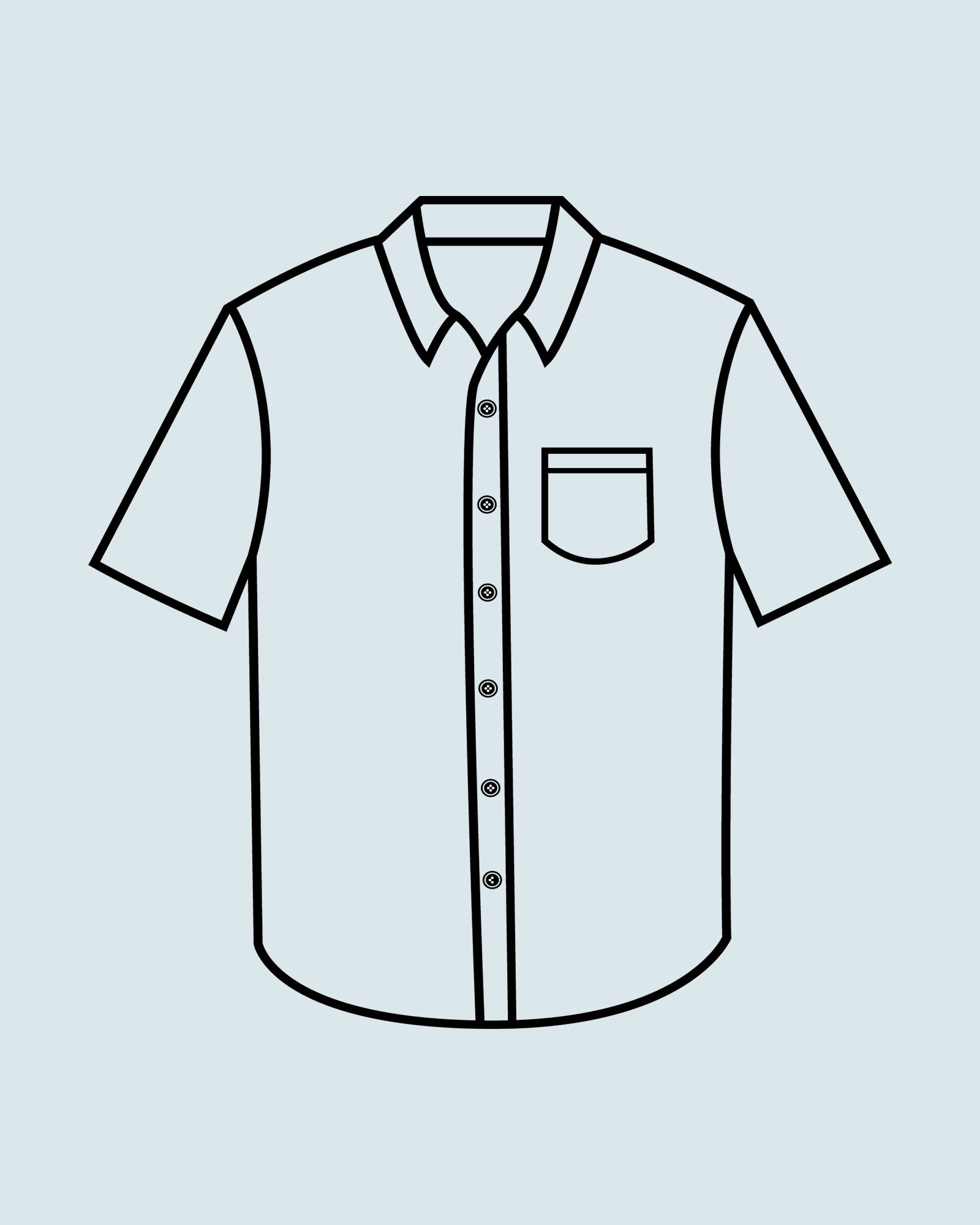Tying your gym shorts might seem like a small detail, but it plays a big role in your workout performance and comfort. A loose knot can distract you mid-set or cause your shorts to shift during cardio. Worse, improperly tied gym shorts can increase your risk of injury by interfering with movement especially during high-intensity workouts or agility drills.
Despite how essential this habit is, it’s often overlooked in most fitness routines. Whether you’re hitting the weights, going for a long run, or flowing through a yoga session, a secure, balanced tie keeps your shorts in place and lets you focus fully on your performance.
This guide is designed for athletes, beginners, runners, and everyday gym-goers who want to make small but impactful improvements to their gear setup. Let's break down everything you need to know about tying gym shorts the right way, starting with the waistband itself.
Understanding the Types of Waistbands on Gym Shorts
The waistband is the foundation of how your gym shorts fit and stay secure. There are three main types you’ll encounter, each with a different level of adjustability and support. Understanding these types will help you choose the right shorts and the best way to tie them.
1. Elastic Waistband with Drawstring
This is the most common and functional waistband type used in modern gym shorts. The elastic offers snug support, while the drawstring gives you full control over tightness. This combo is ideal for weight training, running, and high-intensity interval workouts where movement stability is essential.
2. Elastic-Only Waistbands
These are typically found in minimalist training shorts or budget-friendly options. While they offer convenience and comfort, they can lose elasticity over time and provide less grip during dynamic movements. Without a drawstring, the fit relies entirely on tension making them a risky choice for intense training.
3. Non-Elastic Waistbands
Rare in athletic gear, non-elastic waistbands are more common in style-forward or fashion fitness wear. These typically use zippers, buttons, or fixed fits and aren’t ideal for functional movement. They're better suited for athleisure or post-workout outfits rather than gym floor performance.
Material Matters Too
The fabric blend of your gym shorts impacts how securely the waistband holds. Materials like polyester, mesh, and moisture-wicking synthetics offer durability and sweat resistance, while cotton blends feel softer but can loosen when wet. Choosing the right fabric helps maintain a firm grip throughout your session.
Different Types of Drawstrings – Flat vs. Round vs. Bungee Cord
The type of drawstring on your gym shorts significantly affects how securely they stay in place especially during active workouts. Each drawstring style comes with its own feel, hold strength, and tying behavior.
1. Flat Drawstrings
- Pros: Flat drawstrings provide a wide surface area, which helps distribute pressure evenly and create a tight, non-slip knot. They’re ideal for workouts with a lot of motion.
- Cons: They can twist or fold inside the waistband, making them harder to adjust over time.
- Best for: Weightlifting, HIIT, CrossFit.
2. Round Drawstrings
- Pros: Easier to tie and thread through waistband loops. Often made from cotton or polyester rope.
- Cons: More likely to loosen during high-movement workouts because of their circular profile, especially if the knot isn’t double-tied.
- Best for: Light cardio, yoga, or casual wear.
3. Bungee Cord-Style Drawstrings
- Pros: These are stretchy and self-adjusting, offering minimal knotting effort and fast tightening. Great for quick transitions.
- Cons: They don’t hold knots as securely, and they lose elasticity over time.
- Best for: Trail running, casual gym sessions, or hybrid lifestyle wear.
Step-by-Step: How to Tie Gym Shorts for a Secure Fit
Whether you're heading into an intense lifting session or a long run, the way you tie your shorts matters. Below are the three most effective techniques to keep your shorts from sagging, slipping, or distracting you mid-move.
1. Classic Bow Knot (Best for Everyday Use)
This is the standard tying method quick, easy, and adjustable.
Steps:
- Cross the drawstrings and make the first knot tight.
- Create a loop with one side, wrap the other string around it.
- Pull through to create a bow.
- Tighten both loops evenly.
Best for: General training, stretching, and low-impact workouts.
2. Double Knot (Best for Intense Workouts)
A double knot keeps the bow from loosening especially useful for fast-paced or high-intensity training.
Steps:
- Tie the Classic Bow Knot.
- Take the loops and tie them together in another knot.
- Pull tight and tuck loops under waistband if needed.
Best for: CrossFit, running, plyometrics.
3. Tuck-In Technique (Best for Safety and Clean Look)
Loose strings can be a hazard, especially with gym equipment. Tucking them in helps maintain safety and style.
Steps:
- Use a Classic or Double Knot.
- Tuck the bow and any loose ends into the waistband.
- Smooth out the fabric so nothing bulges or digs in.
Best for: Weightlifting, machines, studio classes.
Best Tie Techniques for Specific Workout Types
Tying your gym shorts properly isn't one-size-fits-all. Depending on your workout, different tie methods can enhance comfort, safety, and performance. Below are tie strategies optimized for four major training styles.
Weightlifting: Stability Over Style
When lifting heavy, you need a locked-in waistband that won’t shift under load. Use a tight classic bow, followed by a firm double knot to prevent slippage during squats or deadlifts. Tuck the loops inside the waistband to avoid snagging on equipment or belts. If your shorts have belt loops or performance liners, make sure everything is flush before lifting.
Running & Cardio: Reduce Bounce and Friction
For high-movement workouts like running, a tight double knot is essential to minimize bouncing and stop the drawstring from flapping. Choose flat drawstrings, which grip better and don’t loosen as easily with repetitive motion. Tuck in any excess string to reduce irritation and prevent the knot from loosening due to wind or sweat.
Yoga: Comfort Over Compression
Yoga demands fluid movement and zero restriction. Opt for a single, loose bow knot tight enough to stay in place but soft enough to bend, twist, and flow. Avoid double knots here, as they can dig into your core during stretches or inversions. Shorts with flat elastic waistbands or internal drawcords offer even more comfort.
CrossFit/HIIT: Lockdown Fit for Dynamic Movement
CrossFit and HIIT require constant motion jumps, lifts, sprints, and floor work. Here, use a double knot with a tuck-in technique for maximum hold. It reduces the chance of needing adjustments mid-session and prevents drawstring ends from interfering with movements like burpees or kettlebell swings. Choose shorts made for this style of training with reinforced waistbands.
How Often Should You Retie or Adjust Gym Shorts Mid-Workout?
If your gym shorts are constantly needing adjustments, it’s not just annoying it’s breaking your concentration and rhythm, which indirectly affects workout performance. According to engagement signals tracked through tools like Chrome user behavior (as revealed in the Google API leak), unnecessary interruptions also lower the quality of user experience, whether on the SERP or in your training session.
Sweat plays a major role in loosening drawstring tension. Moisture softens the material, reducing friction between the knot’s layers especially in round or bungee-style drawstrings. This makes your shorts more likely to slide down or shift. A double knot becomes essential in sweaty conditions.
To minimize mid-workout interruptions, always:
- Tie your shorts before warming up, when the waistband is still dry.
- Choose breathable fabrics like polyester or mesh, which reduce moisture buildup and maintain drawstring integrity.
- Avoid over-tightening, which may force you to untie and readjust due to discomfort as body temperature rises.
Common Mistakes People Make When Tying Gym Shorts (And How to Avoid Them)
Even with the right gym shorts, improper tying techniques can ruin your training experience. Below are the most frequent mistakes people make and how to avoid them with small but impactful changes.
Using Only a Single Loose Knot
A single knot often unravels after a few movements, especially during running or HIIT workouts. Always secure the tie with a double knot to prevent the need for constant re-adjustments.
Not Checking Drawstring Symmetry
Uneven drawstrings result in an unbalanced fit, causing the waistband to pull more on one side. Before tying, pull both ends equally to ensure the knot sits at the center of your body.
Over-Tightening and Restricting Movement
While you want security, tying too tightly can restrict your core, hips, or abdominal movement, especially during compound lifts or yoga. Test flexibility by doing a bodyweight squat before starting your workout.
Letting Strings Hang Loose
Dangling drawstrings can get caught in gym equipment or cause a tripping hazard, especially during dynamic workouts. Always tuck the ends inside the waistband after tying.
Fixing Loose or Worn-Out Drawstrings – Quick Hacks
When your drawstring stops functioning properly, it doesn’t always mean you need to toss the shorts. There are simple, effective fixes that can extend their lifespan while maintaining a secure fit.
DIY Fix: Safety Pin Re-Threading
If your drawstring has slipped inside the waistband, attach a safety pin to one end and carefully thread it through the channel. This method works on most shorts and takes under 5 minutes.
Extend or Replace with Knot Add-Ons
For drawstrings that are too short or frayed at the ends, you can tie on cord extensions using a secure fisherman’s knot. Alternatively, replace the string altogether with a durable cord or flat lace of similar length.
Preventative Maintenance Tips
Wash gym shorts on a gentle cycle, and avoid high heat drying this weakens the elasticity and frays drawstrings faster. When storing, avoid tight knots, as they can deform the waistband over time.
Conclusion: Tying Gym Shorts Isn’t Just Style, It’s Function
The way you tie your gym shorts can make or break your workout. From stability during heavy lifts to flexibility in yoga or friction control during cardio, the right knot supports both your performance and safety. Ignoring this simple step often leads to distractions, discomfort, or even injury especially during intense training sessions.
Take a moment before each workout to test different tying techniques based on your routine. Whether it’s the classic bow, double knot, or a clean tuck-in, dialing in your fit ensures total focus and confidence throughout your session.



